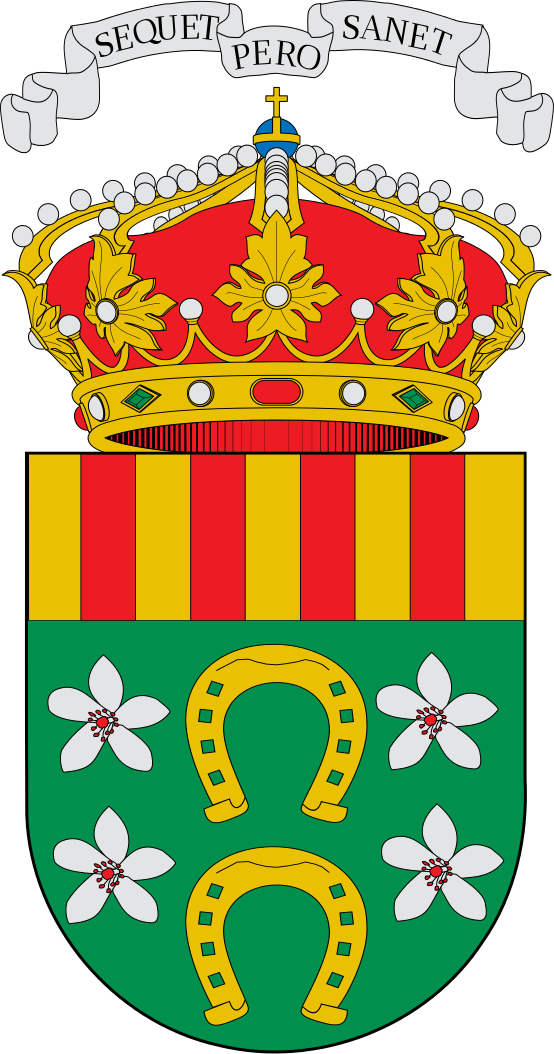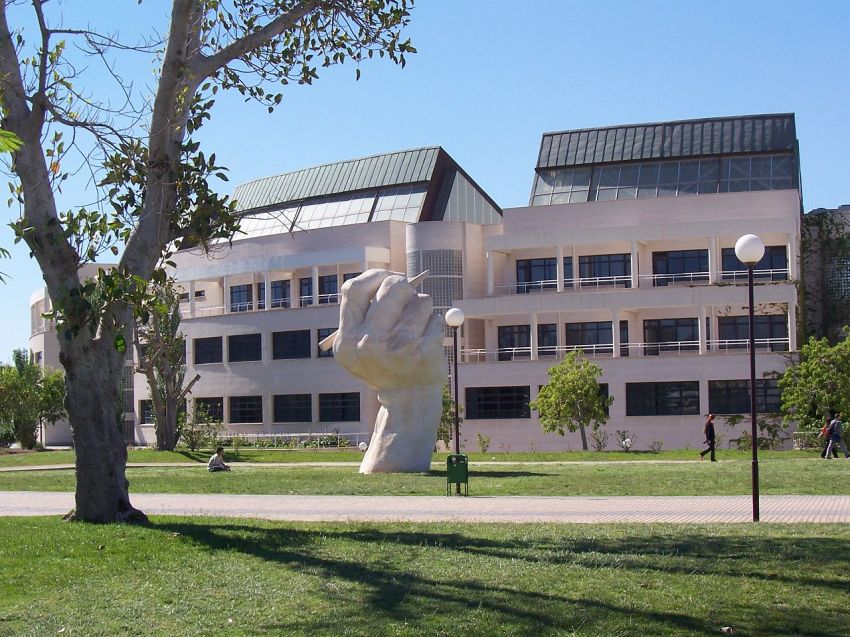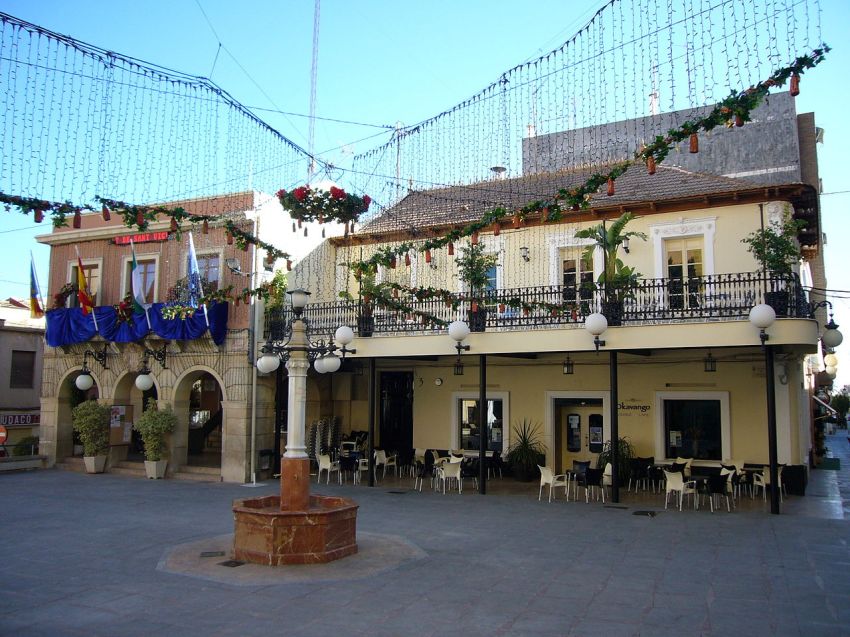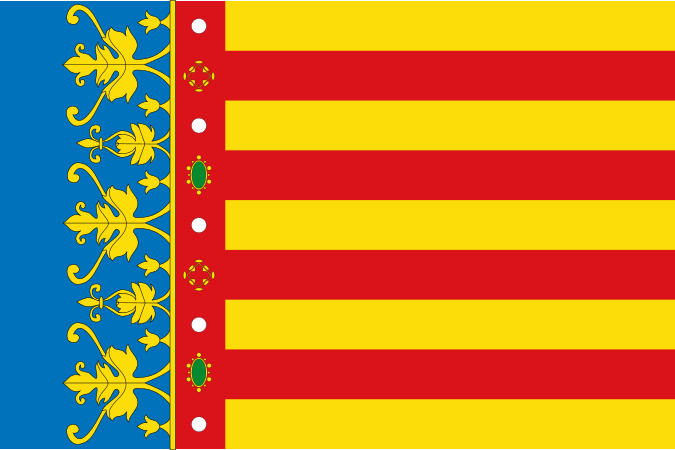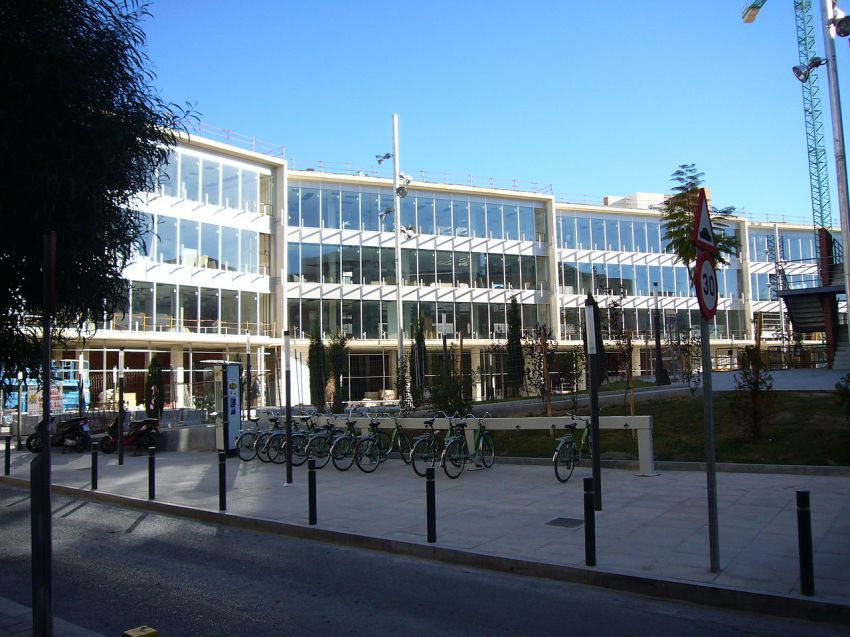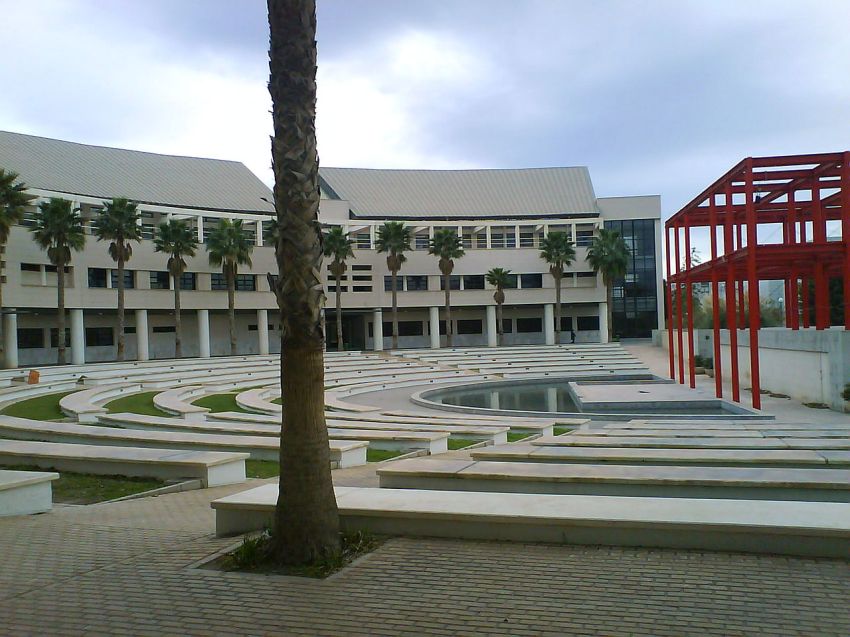San Vicente del Raspeig2 (en valenciano y cooficialmente, Sant Vicent del Raspeig) es un municipio español situado en el noroeste del área metropolitana de Alicante, de laprovincia de Alicante, en laComunidad Valenciana (España). Cuenta con 55 781 habitantes (INE 2013).
En el término municipal de San Vicente del Raspeig se encuentra, desde su fundación en1979, el campus de la Universidad de Alicante. Este hecho le ha valido para colocársele desde entonces la etiqueta de ciudad universitaria y de residencia. Los núcleos urbanos de Alicante y de San Vicente forman un continuo urbanizado, además de poseer buenas comunicaciones entre sí como tren Cercanías, tranvía TRAM(L2) o el autobús de línea n.º 24.
El topónimo del municipio surgió a raíz de la estancia de San Vicente Ferrer en las tierras de El Raspeig sobre 1411. El municipio creció alrededor de una ermita situada enEl Raspeig. Desde el siglo XVII, al menos, se documenta la existencia en distintos protocolos notariales de los primeros núcleos de población habitados en El Raspeig. El carácter de lugar de paso y a la vez cruce de caminos de sus tierras ha marcado su desarrollo histórico a lo largo de siglos. Su independencia total llegó en 1848 tras años de un dilatado proceso segregacionista de la ciudad de Alicante. Posteriormente, en elsiglo XX se produjo laindustrialización del municipio y su inclusión en el área metropolitana de Alicante, con el consiguiente crecimiento demográfico. A finales delsiglo XX el municipio experimentó una extensión urbanística muy importante que sumado al proceso de desindustrialización ha acabado convirtiendo al municipio en residencial.
Símbolos
Escudo
El escudo de armas del municipio, tiene su origen sobre 1960 aunque no fue publicado oficialmente en el BOE hasta 1970, y es obra de José Rodríguez Torregrosa, ex alcalde de San Vicente del Raspeig.3
La tipología externa que presenta el blasón municipal corresponde a un escudo cortado con corona real y lema. La mitad inferior del escudo presenta un fondo de color verde(color tradicionalmente vinculado a las comunidades de simbología islámica). La mitad superior del escudo sanvicentero vincula a una comunidad histórica de base medieval que comparte los diversos territorios y nacionales que formaban parte de la antiguaCorona de Aragón; se trata de las cuatro barras rojas (Barras de Aragón) sobre fondodorado o amarillo.
La corona que aparece sobre el escudo es un símbolo de la vinculación tradicional de las tierras sanvicenteras a la jurisdicción real, y por tanto, foral. Las cuatro flores dealmendro que se reparten a los lados izquierdo y derecho de la mitad inferior, simbolizan el culto ancestral que las civilizaciones mediterráneas han profesado a lanaturaleza.
Las dos herraduras de oro que hay en el centro de la mitad inferior, pueden recordar laleyenda de la pérdida de la herradura del burro de fray Vicente Ferrer al llegar al Raspeig. La herradura aparece también en el escudo de la familia judeoconversa de los Ferrer. El hecho de que las herraduras del blasón sean precisamente de siete llaves nos puede hacer pensar el simbolismo positivo que tiene este número a la cultura de raíz judía y a la propia cultura popular española. Las herraduras constituyen un símbolo de una de las principales actividades de los habitantes sanvicenteros del siglo XVIII, XIX, y primeros del XX: losacarreadores.
El lema Sequet però Sanet reproduce, según la leyenda popular, la contestación que Vicente Ferrer dio a un labrador del Raspeig cuando éste le pedía agua para los campos secos. La permanencia de estas palabras en la cultura popular y en la heráldica local identifica San Vicente del Raspeig con el conjunto de territorios de lengua catalana y más concretamente con los que hablan la variante valenciana.
Himno
El himno de San Vicente del Raspeig, titulado Sant Vicent mon poble, describe entre otras cosas su clima y naturaleza mediterránea. Fue compuesto por el maestro José Miralles, el cual también puso letra. Más tarde fue la, ya fallecida directora de la Masa Coral la Aurora, Dña. Ascensión Guijarro, quien haría la transcripción de su letra a la lengua valenciana.
_________________________________…………………………========================
San Vicente del Raspeig 2 (in Valencian and co-official, Sant Vicent del Raspeig ) is amunicipality Spanish located in the northwest of the metropolitan area of Alicante , in the province of Alicante , in theValencian Community ( Spain ). It has 55,781 inhabitants ( INE 2013 ).
In the municipality of San Vicente del Raspeig is, since its founding in 1979 , the campus of the University of Alicante . This has earned him the label colocársele since college town and residence. The towns ofAlicante and San Vicente urbanized form a continuous, besides having good communications with each other as commuter train ,tram TRAM (L2) or bus line No. 24.
The place-name of the municipality grew out of the stay of San Vicente Ferrer in the lands of the Raspeig about 1411 . The town grew around a chapel located at the Raspeig. From the seventeenth century , at least documented the existence in different protocols notary of the first villages inhabited The Raspeig. The character of a transit while crossing paths of their land has marked its historical development overcenturies . Its total independence came in 1848 after years of a lengthy process segregationist cityAlicante . Later in the twentieth century came the industrialization of the municipality and its inclusion in the metropolitan area of Alicante, resulting in population growth. In the late twentieth century the city experienced a major urban expansion that added to the deindustrialization process has finished converting the municipality into residential.
Symbols
Shield
The coat of arms of the municipality, has its origin about 1960 although it was not officially published in the BOE until 1970 , and is the work of José Rodríguez Torregrosa , former mayor of San Vicente del Raspeig. 3
External typology presents blazon city corresponds to a cut shield royal crown andmotto . The lower half of the shield has a base color green (color traditionally linked to communities symbology Islamic ). Theupper half of the shield sanvicentero linked to a historical community of medieval sharing basis and the various national territories that were part of the former Crown of Aragon ; it is the four red bars ( Bars of Aragon ) on background golden or yellow .
The crown that appears above the shield is a symbol of traditional linkage of land sanvicenteras royal jurisdiction, and therefore leasehold . The four flowers of almondthat are distributed to the left and right sides of the lower half symbolize the worshipancient Mediterranean civilizations that have professed to nature .
The two horseshoes of gold is in the center of the lower half, can remember the legendof lost horseshoe donkey Fray Vicente Ferrer to reach Raspeig. The shoe also appears on the coat of the familyjudeoconversa of Ferrer. The fact that the shoes are precisely blazon seven keys we can think positive symbolism that has this number to Jewish roots and culture of Spanish popular culture. The shoes are a symbol of one of the main activities of the inhabitants sanvicenteros the eighteenth century , nineteenth , and early twentieth : the carriers .
The slogan Sequet però Sanet plays, according to popular legend, the answer you gave Vicente Ferrer a labrador Raspeig when he asked water to dry fields. The permanence of these words in the popular culture and the heraldry Local San Vicente del Raspeig identifies with all territories of Catalan language and more specifically with those who speak variant Valencia .
Anthem
The anthem of San Vicente del Raspeig entitled Sant Vicent mon Poble describe including its Mediterranean climate and nature. It was composed by maestro José Miralles, who also wrote lyrics. Later was the now deceased director of the Mass Coral Dawn, Ms. Ascension Guijarro, who would make the transcript of his letter to the Valencian language.
Fuente:

